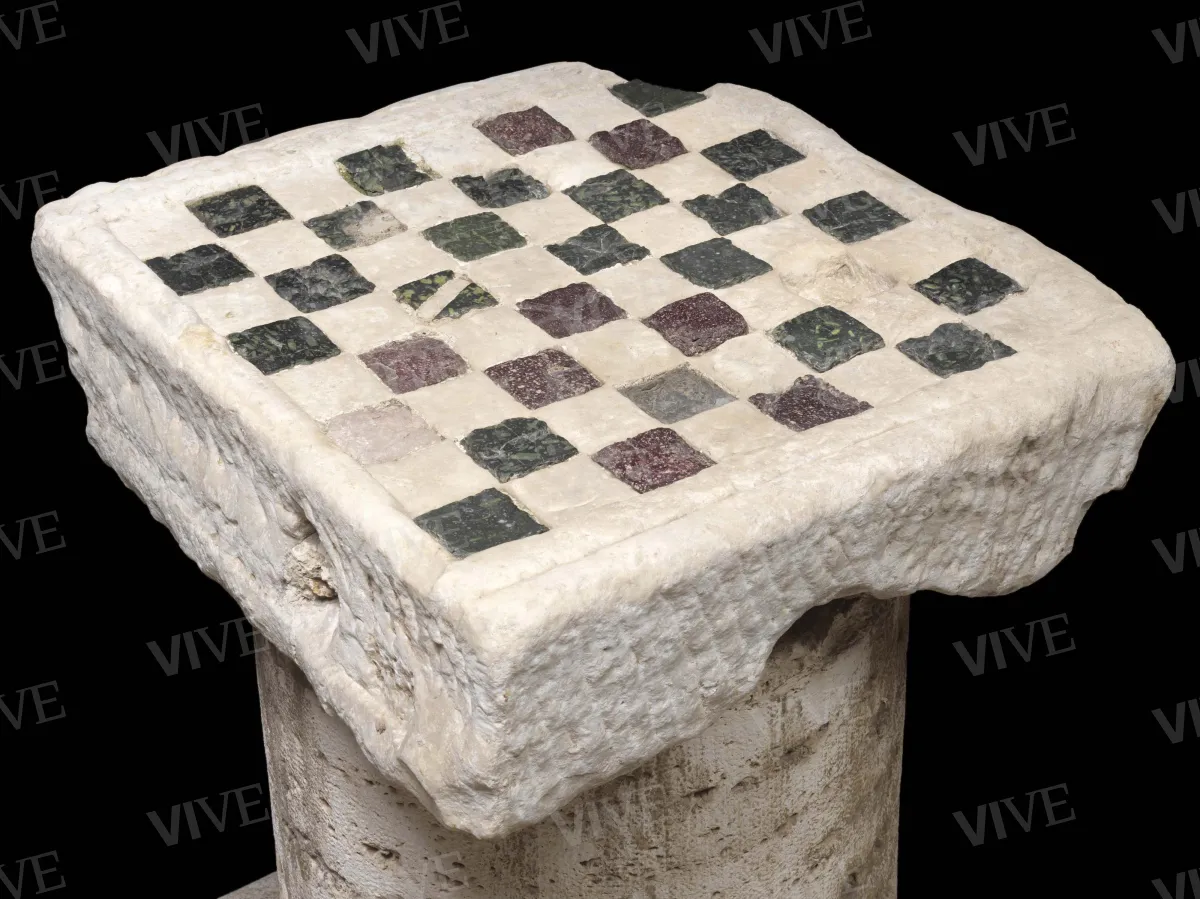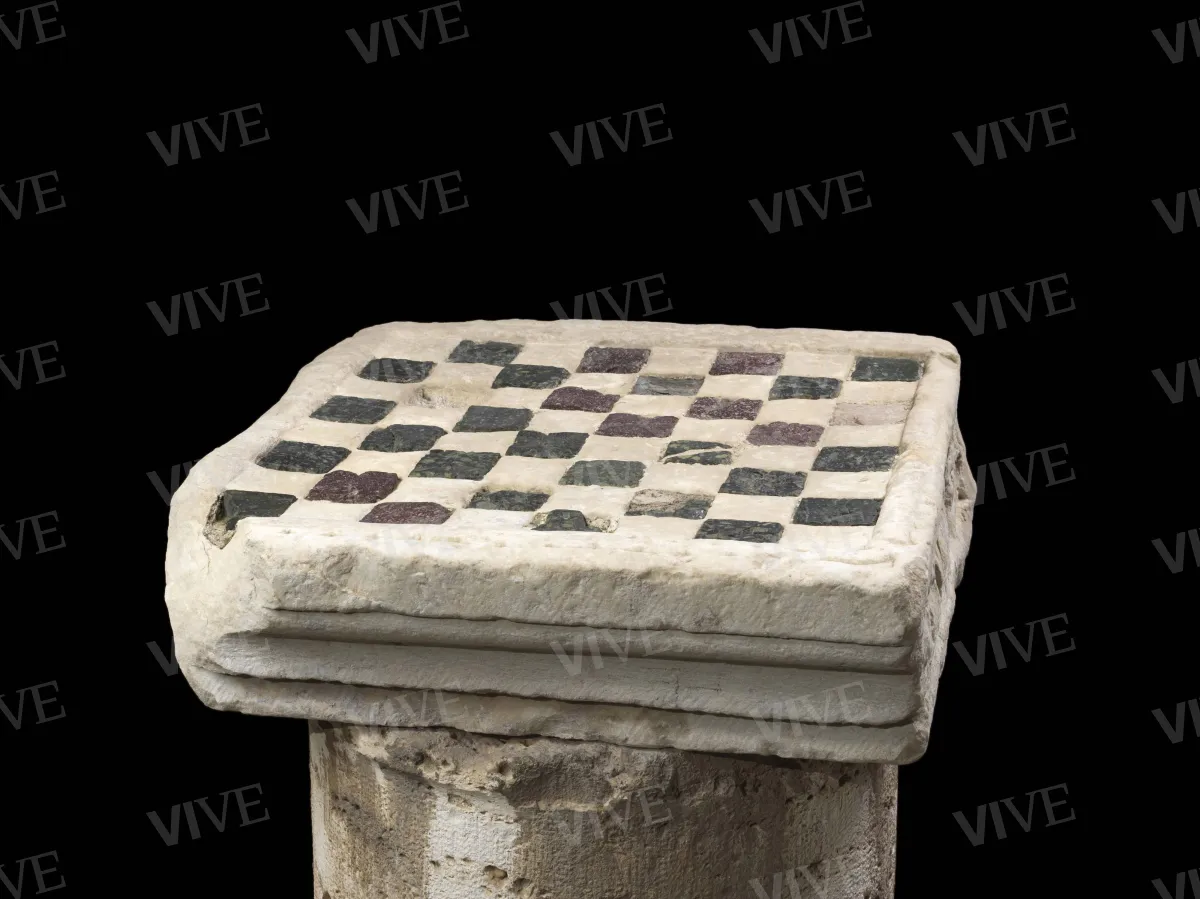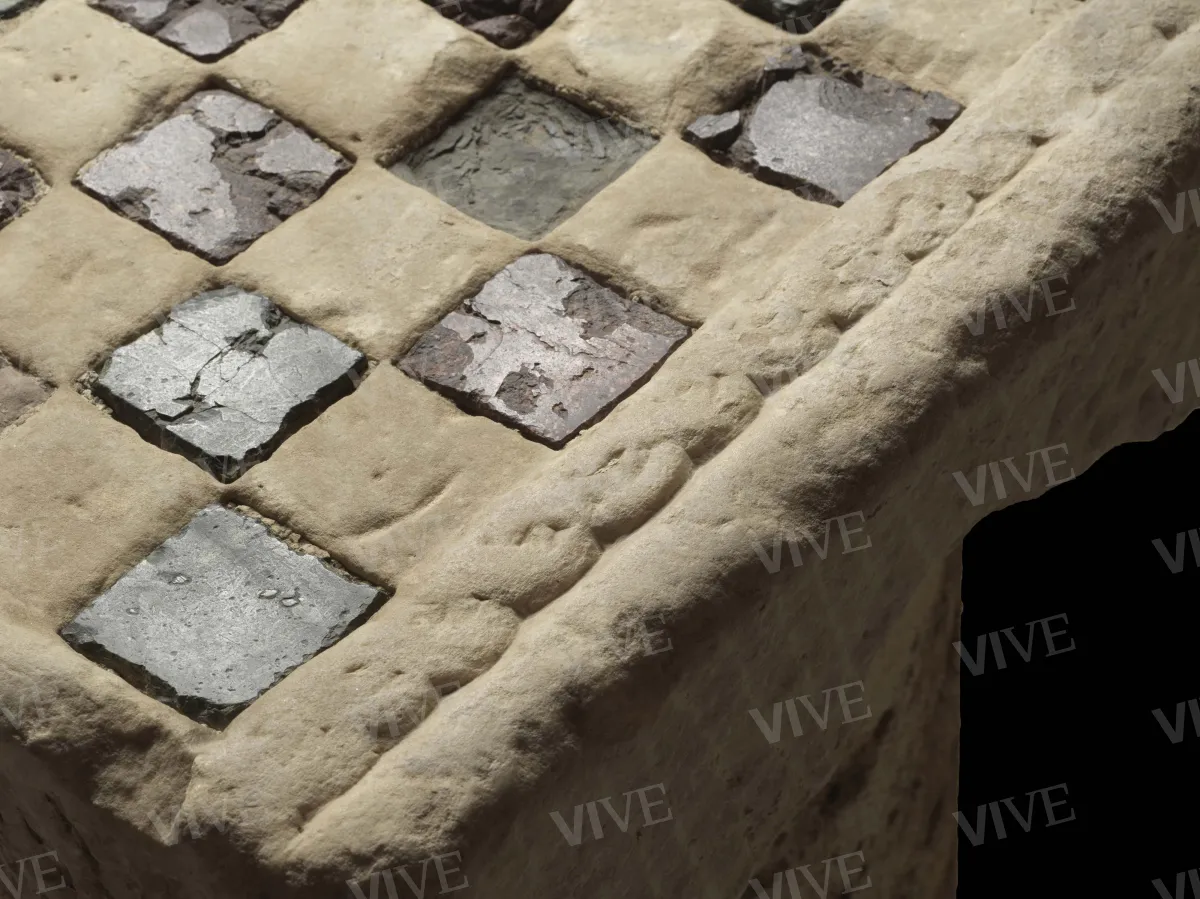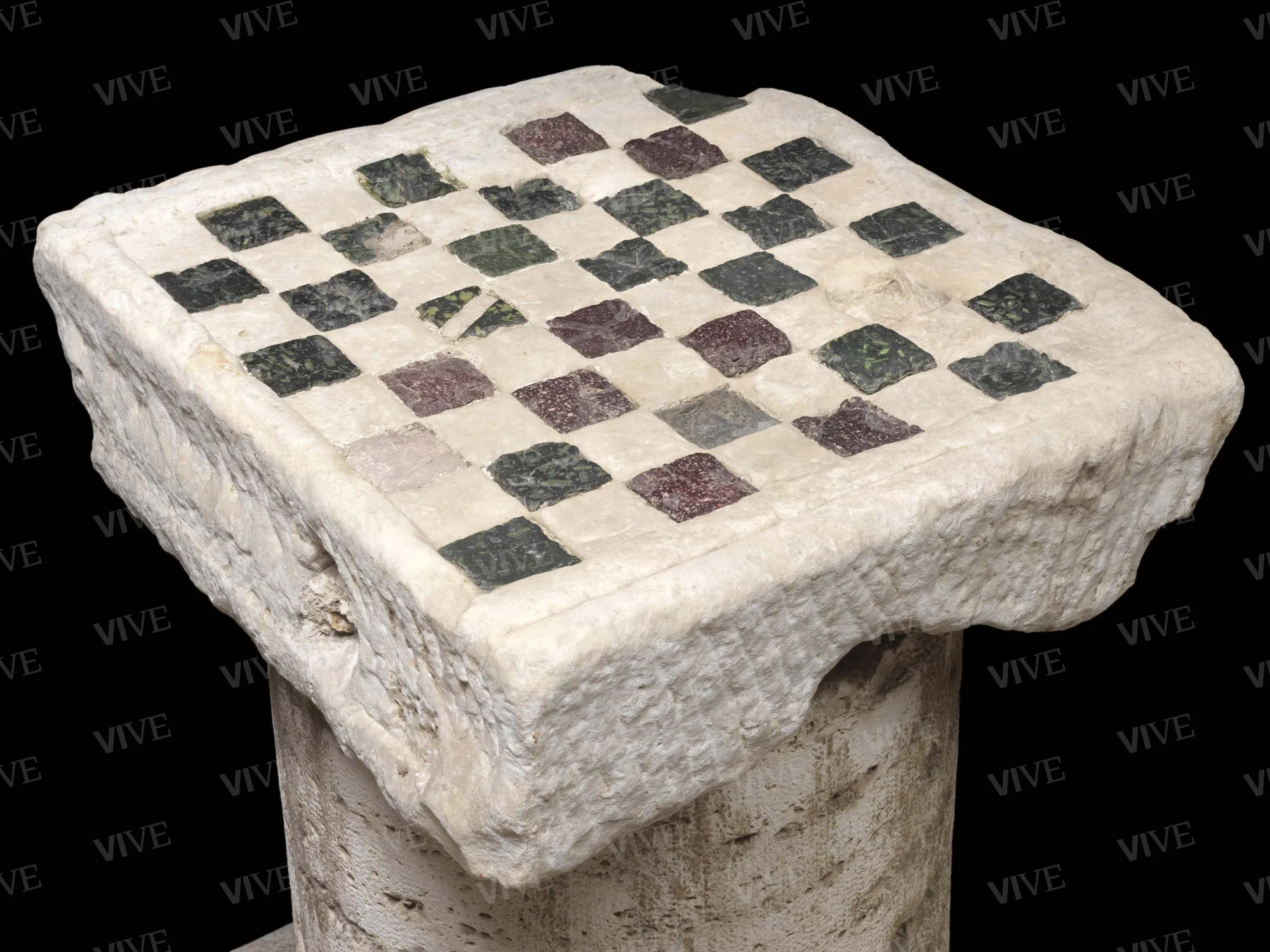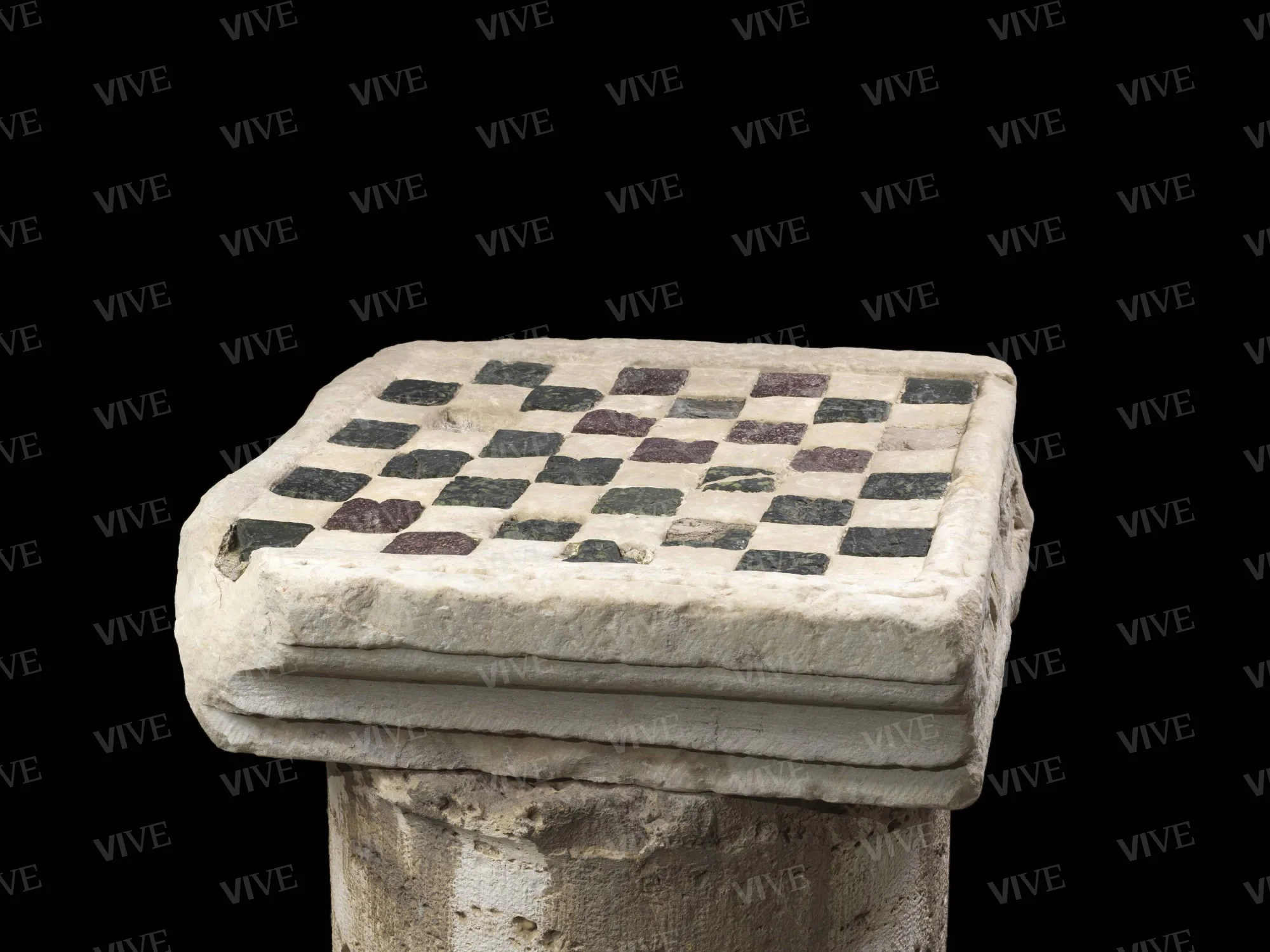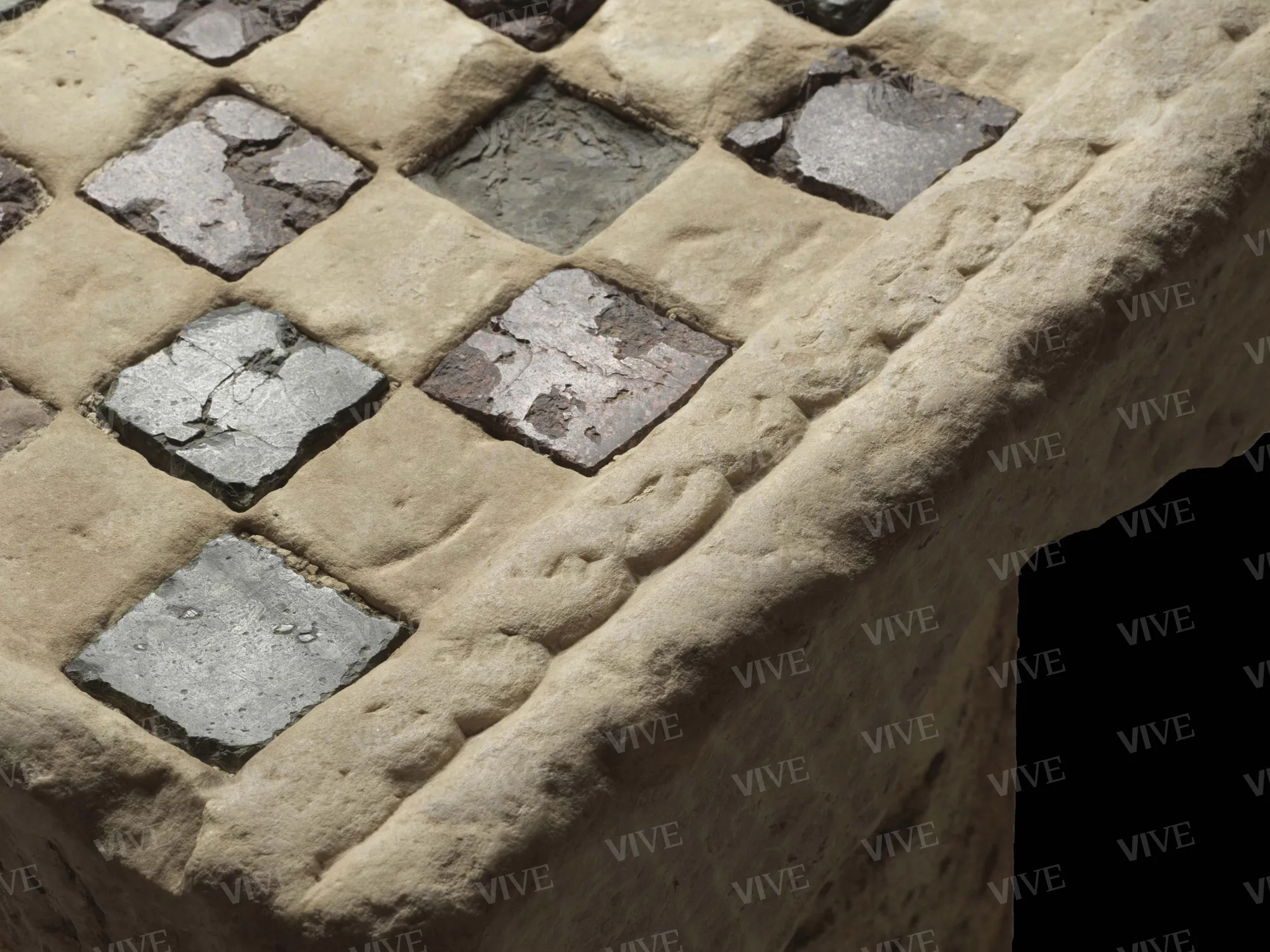Chessboard
Roman (?) workshop 13th century
This chessboard, made from a single block of white marble, features alternating compartmentalization of white and colored squares. The latter are obtained from square-shaped elements of porphyry and green serpentine inserted within specially arranged hollows on the playing surface. Two of the sides of the chessboard are decorated with a weave pattern, which perhaps alludes to the iconographic theme of intertwined snakes.
This chessboard, made from a single block of white marble, features alternating compartmentalization of white and colored squares. The latter are obtained from square-shaped elements of porphyry and green serpentine inserted within specially arranged hollows on the playing surface. Two of the sides of the chessboard are decorated with a weave pattern, which perhaps alludes to the iconographic theme of intertwined snakes.
Details of work
Catalog entry
The game of chess, originally from the East, was introduced to the West by the Arabs and has been played here since at least the tenth century. The “Versus de Scachis” (Einsiedeln, Stiftsbibliothek, ms. 365), a poem in Latin composed between 900 and 950 CE, contains a description of chess and the chessboard, introducing an important clarification concerning the typical two-tone character of the chessboard’s squares (Gamer 1954). If surviving medieval chess sets are quite numerous, both thanks to archaeological finds and their inclusion in great ecclesiastical treasures (Cordez 2016, pp. 113-133), rarer, on the other hand, are chess sets from the Middle Ages, most of which are portable, as opposed to the Palazzo Venezia board which is instead a fixed piece of furniture. Indeed, Manuela Gianandrea has conclusively determined that the object in question was conceived as a chessboard and is not part of a pavement. Beyond the traditional eight rows and eight columns of squares typical of chessboards, in fact, this artifact also has a base conformation with molding that made it possible for it to be positioned discretely, perhaps on a marble support. Because of its material components, Gianandrea attributes it to a Roman workshop active between the twelfth and fourteenth centuries in line with the production known as Cosmatesque or Cosmati. The sixty-four squares, excluding the thirty-two white squares carved sparingly on the same marble support, include green serpentine (lapis lacedaemonius) and porphyry (lapis porphyrites), which are the Roman workshop’s most characteristic materials. These square, approximately two-centimetre-thick marble elements are placed in hollows carved out on the white marble top and fixed with mortar (remnants of which are still extent). Of the original thirty-two elements, twenty-one have survived in green serpentine, eight in red porphyry, and three are missing. Portions of Roman-era chessboard opus sectile were reused in the Middle Ages in several Roman churches, for example in the twelfth-century Santa Maria in Cosmedin (Del Bufalo 2010, p. 101). The floor of the chapel of San Zeno in the Roman church of Santa Prassede, on the other hand, has a fine chessboard motif from the Middle Ages (Del Bufalo 2010, p. 102). After all, in the range of ornamental solutions invented by the marble workers known as Cosmatesques, the checkerboard motif was often repeated (Pajares-Ayuela 2002). However, in the chessboard under consideration, the chromatic differentiation and distribution of serpentine and porphyry, in other words between green and red, does not seem to follow a precise order, and it is likely that some of these stone inserts are the result of restoration work. The history of the artifact, moreover, is completely unknown: it is clearly identifiable in a photo of the Loggia of Palazzo Venezia’s Giardino Grande dating from the first decade of the twentieth century (Mahlknecht 2011, p. 271, fig. 5), thus corroborating Gianandrea’s report of its presence in the palazzo grounds before it was transformed into a museum venue in 1916. According to Gianandrea, it may originally have come from the demolition of a building near Palazzo Venezia (Gianandrea 2008). It is likely that the chessboard was originally equipped with marble pieces: although there is no record or trace of porphyry or serpentine chess pieces, there are a few isolated examples within the Islamic context of entire sets in marble, in addition to indubitably more valuable chessboards in rock crystal (Freeman 2018).
Giampaolo Distefano
Entry published on 12 February 2025
State of conservation
Discrete. Three colored marble elements are missing.
References
Gamer Helena M., The Earliest Evidence of Chess in Western Literature. The Einsiedeln Verses, in «Speculum», 29, 4, 1954, pp. 734-750;
Sanvito Alessandro, Cenni di storia degli scacchi, in Sanvito Alessandro (a cura di), L’arte degli scacchi, catalogo della mostra (Firenze, Biblioteca Nazionale Centrale, 24 maggio-25 giugno 2000), Cremona 2000, pp. 11-31;
Pajares-Ayuela Paloma, Cosmatesque Ornament. Flat Polychrome Geometric Patterns in Architecture, London 2002;
Gianandrea Manuela, in Barberini Maria Giulia (a cura di), Tracce di pietra. La collezione dei marmi di Palazzo Venezia, Roma 2008, pp. 211-212, n. 47;
Del Bufalo Dario, Marmorari Magistri Romani, Roma 2010;
Mahlknecht Werner, Il Palazzo di Venezia e il possesso dell’Impero d’Austria, in Barberini Maria Giulia, De Angelis Matilde, Schiavon Alessandra (a cura di), La storia del Palazzo di Venezia: dalle collezioni Barbo e Grimani a sede dell’ambasciata veneta e austriaca, Roma 2011, pp. 245-293;
Cordez Philippe, Trésor, mémoire, merveilles: les objets des églises au Moyen Âge, Paris 2016;
Freeman Fahid Deborah, Chess and Other Games Pieces from Islamic Lands, New York 2018.

